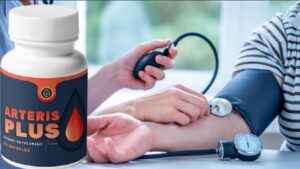Understanding Mesothelioma Lawsuits: A Comprehensive Guide

Female african professional medic nurse wear face mask, gloves, blue green uniform showing heart hands shape. Medical love, care and safety symbol, corona virus health protection sign concept. Closeup
What is Mesothelioma?
Mesothelioma is a rare and aggressive form of cancer that primarily affects the lining of the lungs, abdomen, or heart. The only known cause of mesothelioma is asbestos exposure. Asbestos is a fibrous material that, when disturbed, releases tiny particles into the air. These particles can be inhaled or ingested, becoming lodged in the tissue surrounding bodily organs and leading to disease development.
Understanding Asbestos Exposure
Asbestos was widely used in various industries, including construction, shipbuilding, and manufacturing, due to its heat-resistant properties. Workers in these industries, as well as military veterans, are at a higher risk of exposure. The Lanier Law Firm specializes in representing victims of asbestos exposure and mesothelioma, holding manufacturers accountable for their negligence. They offer personalized legal support to clients nationwide and have achieved significant settlements.
Legal Grounds for Filing a Lawsuit
To file a mesothelioma lawsuit, plaintiffs must prove that their illness was caused by asbestos exposure due to the negligence of a company or entity. Legal grounds for filing a lawsuit include:
- Negligence: The defendant failed to exercise reasonable care to prevent asbestos exposure.
- Strict Liability: The defendant is liable for damages caused by their products, regardless of fault.
- Breach of Warranty: The defendant breached a warranty that their product was safe for use.
Understanding these legal grounds is crucial for building a strong case and seeking compensation for medical expenses, lost wages, and pain and suffering.
Types of Mesothelioma Lawsuits
When dealing with a mesothelioma lawsuit, there are different types of lawsuits that one can file. The type of lawsuit depends on whether the person affected is seeking compensation for their own illness or for the death of a loved one due to asbestos exposure. Here are the main types of mesothelioma lawsuits:
Personal Injury Lawsuits
A personal injury lawsuit is filed by the person who has been diagnosed with mesothelioma. This type of lawsuit aims to recover damages for various losses, including:
- Medical expenses
- Loss of income
- Pain and suffering
To win a personal injury lawsuit, the lawyer must prove when and how the asbestos exposure happened and link it to the illness. The case can either be settled out of court or go to trial.
Wrongful Death Lawsuits
If a person dies from mesothelioma caused by asbestos exposure, their family can file a wrongful death lawsuit. This type of lawsuit seeks compensation for:
- Medical costs
- Funeral expenses
- Lost income
- Other related damages
Class Action Lawsuits
In a class action lawsuit, one or more plaintiffs file on behalf of a larger group of people who have similar claims. However, class action lawsuits for mesothelioma have become less common since the late 1990s. The U.S. Supreme Court ruled that these lawsuits were unfair to people who had not yet been diagnosed and had different exposure histories. Nowadays, mesothelioma cases are usually handled as individual lawsuits or mass torts, where multiple plaintiffs sue the same company but have their cases heard separately.
Steps in Filing a Mesothelioma Lawsuit
Filing a mesothelioma lawsuit involves several critical steps. Each step is essential to ensure that the case is strong and that the victim receives the compensation they deserve. Here are the key steps involved:
Diagnosis and Medical Treatment
The first step is to get a diagnosis of mesothelioma from a qualified medical professional. This diagnosis is crucial as it links the illness to asbestos exposure. Following the diagnosis, the patient should seek appropriate medical treatment to manage the disease.
Choosing the Right Attorney
Selecting an experienced mesothelioma attorney is vital. Look for a lawyer with a proven track record in asbestos litigation. An experienced attorney can help navigate the complexities of the legal process and identify the best strategy for your case.
Filing the Complaint
Once you have chosen an attorney, the next step is to file a formal complaint. This document outlines the details of your case, including the defendants you are suing and the basis for your lawsuit. Your attorney will handle the filing process and ensure that all legal requirements are met.
Discovery Phase and Trial
During the discovery phase, both parties exchange information and gather evidence to support their claims. This phase is critical for building a strong case. If a settlement is not reached, the case will proceed to trial, where a judge or jury will determine the outcome.
Compensation in Mesothelioma Lawsuits
Types of Compensation Available
In mesothelioma lawsuits, compensation can come in various forms. The primary types include:
- Medical Expenses: Covers the cost of treatments, hospital stays, and medications.
- Lost Wages: Compensates for income lost due to the inability to work.
- Pain and Suffering: Addresses the physical and emotional distress caused by the disease.
- Punitive Damages: In cases of extreme negligence, additional sums may be awarded to punish the responsible parties.
Factors Influencing Compensation
Several factors can affect the amount of compensation in a mesothelioma settlement:
- Medical Costs and Lost Earnings: The financial burden of mesothelioma extends beyond medical bills, including lost wages and reduced earning capacity.
- Negligence: Cases where companies knew the dangers of asbestos but failed to warn consumers often result in higher payouts.
- Number of Companies Involved: Multiple defendants can lead to higher settlements, as each may share responsibility for the exposure.
- State-Specific Factors: The legal landscape varies by state, affecting the burden of proof and potential compensation amounts.
- Case Matrix: Asbestos companies often use valuation matrices to determine compensation based on disease specifics and exposure levels.
How Settlements are Reached
Settlements in mesothelioma cases can be beneficial for both parties. The plaintiff knows exactly how much they will receive, avoiding the uncertainty of a jury decision. Settlements can be offered at any phase in the process, sometimes even after a defendant has been found liable but before a judgment is entered. This allows both sides to avoid the time and expense of a trial.
Challenges in Mesothelioma Litigation
Statute of Limitations
One of the first hurdles in mesothelioma litigation is the statute of limitations. This is the time limit within which a lawsuit must be filed. Each state has its own rules, and these can vary widely. Missing this deadline can mean losing the right to seek compensation altogether. Therefore, it’s crucial to act quickly and consult with an experienced attorney to ensure all legal timelines are met.
Proving Asbestos Exposure
Another significant challenge is proving that asbestos exposure caused the mesothelioma. This often involves tracing back decades of work history and identifying specific instances of exposure. Gathering this evidence can be difficult, especially when companies have gone out of business or records are incomplete. Expert testimony and thorough investigations are usually required to build a strong case.
Dealing with Multiple Defendants
Mesothelioma cases often involve multiple defendants, such as different employers or manufacturers of asbestos-containing products. Each defendant may try to shift the blame onto others, complicating the legal process. Coordinating a case against several parties requires meticulous planning and legal expertise. An experienced attorney can navigate these complexities to ensure that all responsible parties are held accountable.
The Role of Experienced Mesothelioma Attorneys
Why Legal Expertise Matters
Navigating mesothelioma litigation requires specialized knowledge. Experienced attorneys can provide guidance tailored to individual cases, helping plaintiffs make informed decisions. These lawsuits are complex and demand careful consideration of legal strategies and potential outcomes. From pretrial negotiations to courtroom litigation, plaintiffs must be aware of the many factors that can influence their cases, including evidentiary strength and jurisdictional nuances.
How Attorneys Build a Strong Case
Building a robust case relies on gathering extensive evidence linking specific companies to asbestos exposure. This evidence strengthens negotiations for a fair settlement or supports a compelling court case. Legal expertise in mesothelioma litigation is vital, as specialized attorneys navigate complexities, investigate thoroughly, and strategically negotiate on behalf of their clients. Partnering with a qualified attorney enhances the ability to hold accountable all responsible parties and secure the maximum compensation available.
Navigating Jurisdictional Nuances
Mesothelioma cases often involve exposure in multiple jurisdictions, each with different rules and procedures. An experienced attorney can determine which defendants to file against and in which court. They will also know the appropriate statute of limitations that sets the filing deadline for the case. This expertise ensures that all necessary legal documents are prepared and submitted on time, initiating the case effectively.





